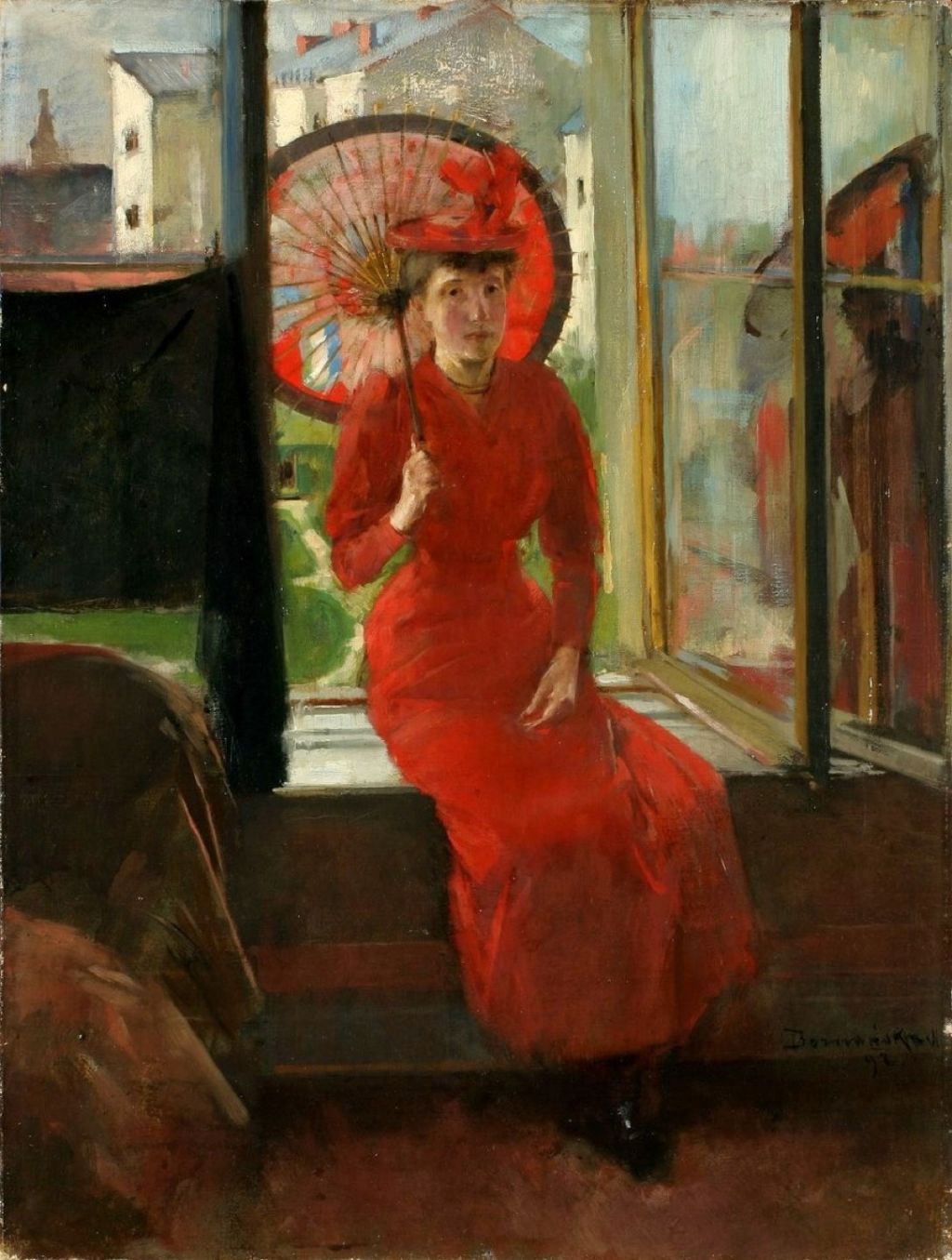Which post-Impressionist painted in Paris from 1898, exhibited to acclaim across Europe from 1892, and in America from 1901, was made a member of the Legion of Honour in 1912, and won the Grand Prix at the Exposition in Paris in 1939? You may be surprised to know that the answer is the Polish woman artist Olga Boznańska (1865–1940), who was defining post-Impressionist art as early as the late 1880s.
And I too had never heard of her, let alone seen any of her work, until I started researching this article and the next, in which I will tell her story and show some of her paintings.
Boznańska was born in the Polish city of Kraków, at a time when the country was partitioned between the Austrian, Prussian, and Russian empires. Her mother was French, and started teaching her to draw. Recognising her promise, from 1883 she was taught by local artists, then attended the Adrian Baraniecki Higher Courses for Women until 1886.

Her two paintings of City Buildings from 1885 (above and below) appear to have been painted as quick Impressions, probably in front of the motifs in the city of Kraków.
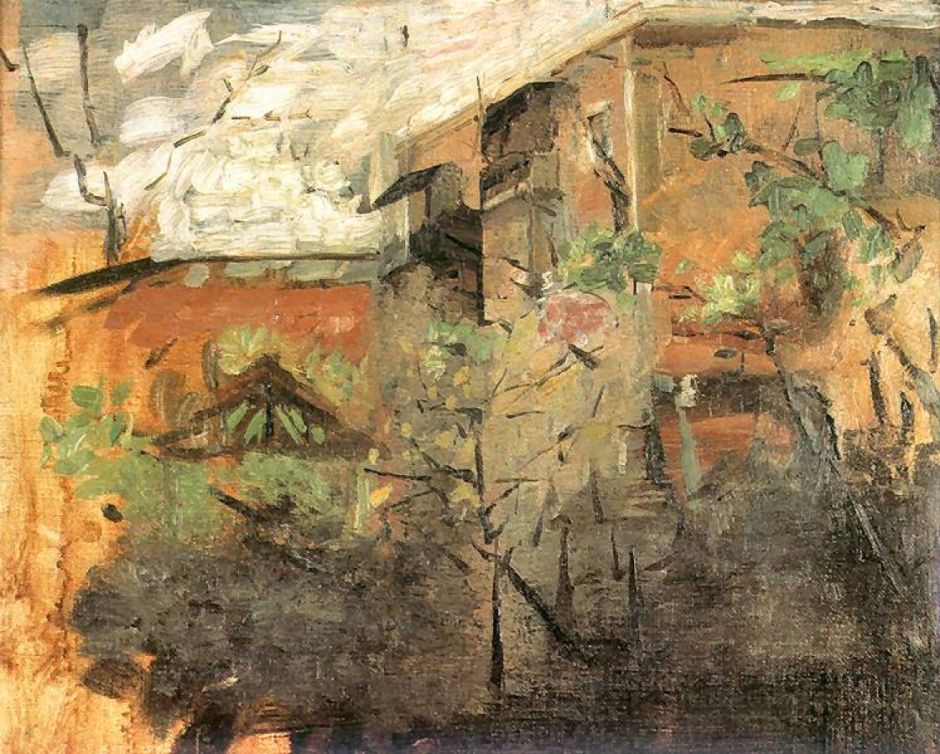
In 1886, Boznańska moved to Munich, Germany, where she studied at the Munich Academy of Fine Arts until 1889. She spent a lot of time copying Old Masters at the Pinakothek, and works of Velàsquez in Vienna. However, her main artistic influences were Whistler, Édouard Manet, and Wilhelm Leibl.
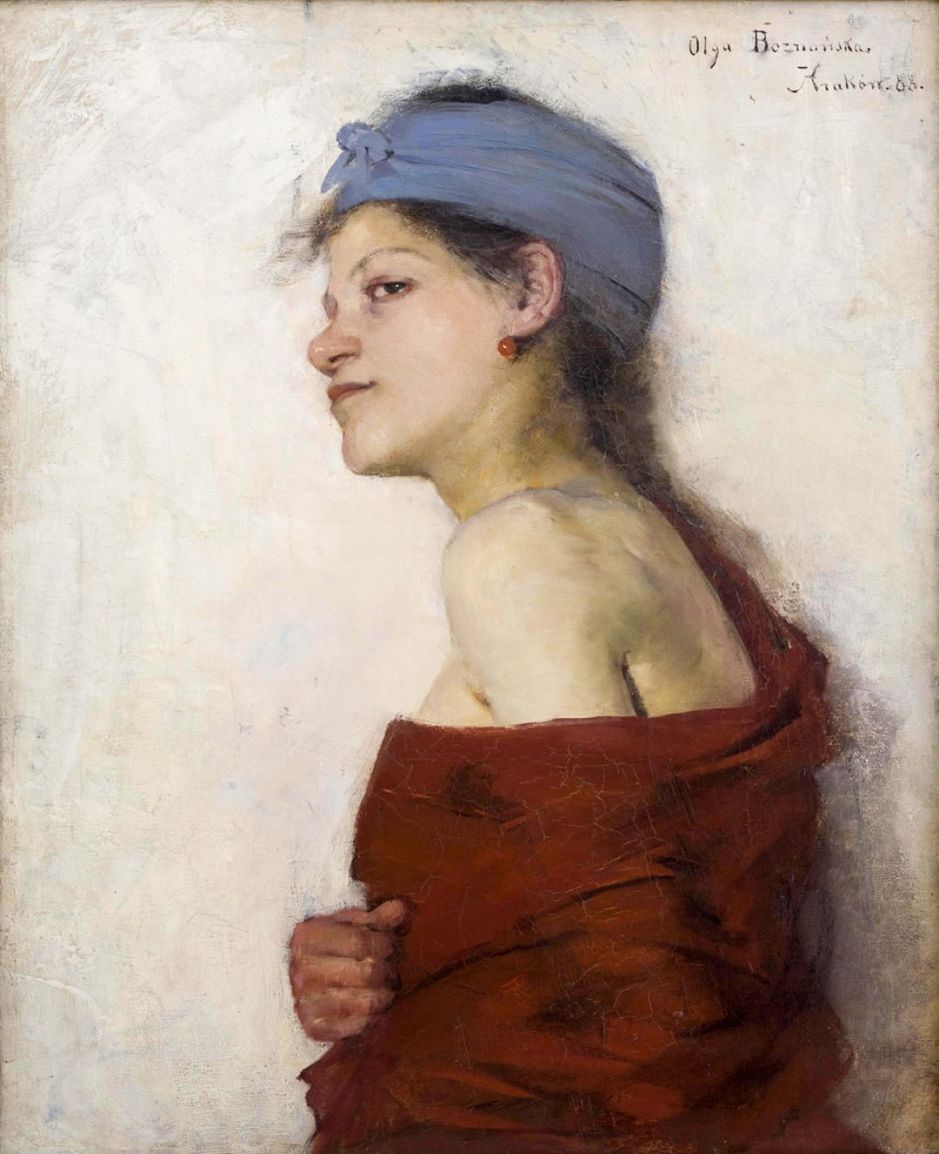
Boznańska quickly specialised in portraiture, with paintings such as her innovative Portrait of a Woman (Gypsy Woman) from 1888.

Portrait of a Young Woman with a Red Umbrella (1888) shows the artist’s sister, and marks the start of a brief period of Japonism(e) in Boznańska’s portraits.

Japanese (1889) is another portrait heavily influenced by the popular Japonism(e) of the time.
When she had completed her training at the Munich Academy of Fine Arts, she remained in the city and opened her own studio there.
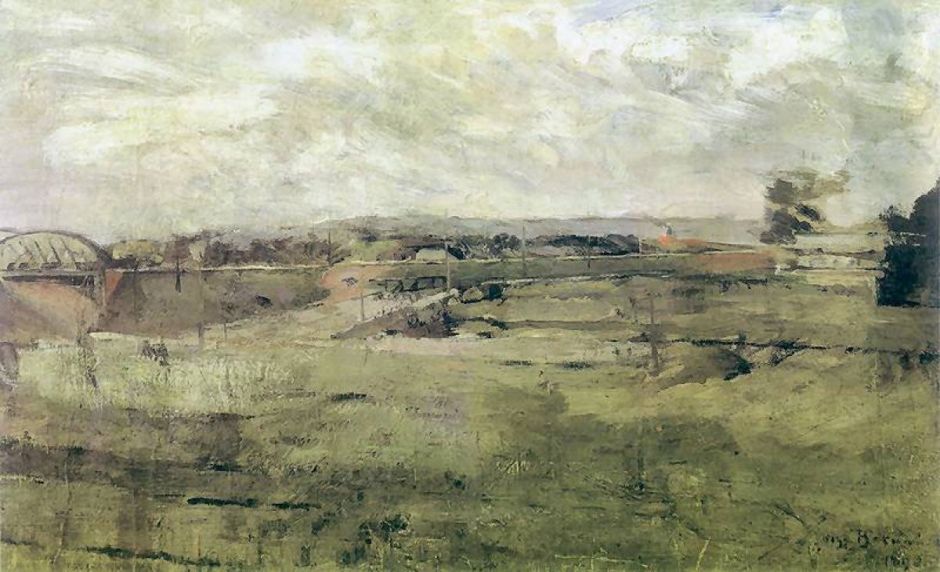
Not known as a landscape painter, Boznańska’s occasional landscapes, such as her Landscape with a Viaduct (Landscape with Tracks) from 1890, appear to have been sketched en plein air. They make interesting comparison with the contemporary work of Paul Cézanne, for example.

I don’t know if Boznańska visited any of the artists’ colonies in Brittany, but Breton (1890), her portrait of a young Breton woman, coincides with the peak popularity of the colony at Pont-Aven.
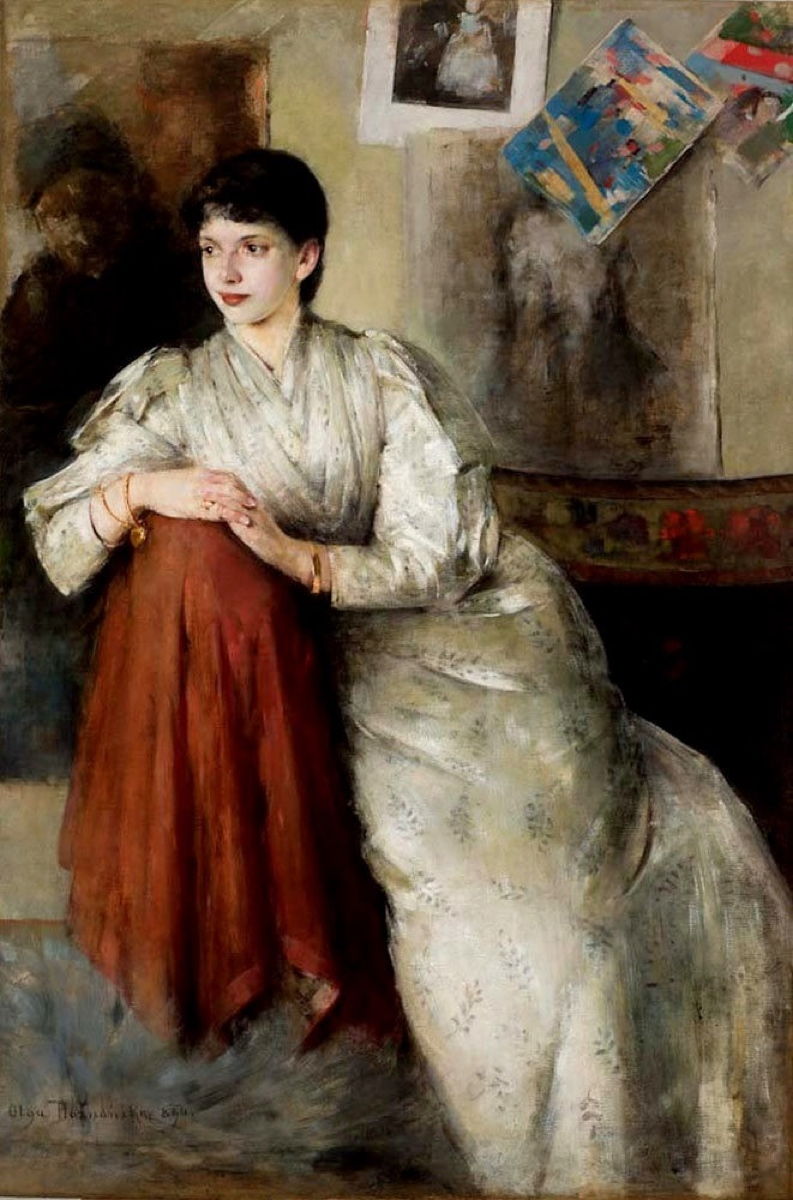
Portrait of Woman in White (Zofia Federowiczowa) (1890).

Girl with a Basket of Vegetables in a Garden (1891).
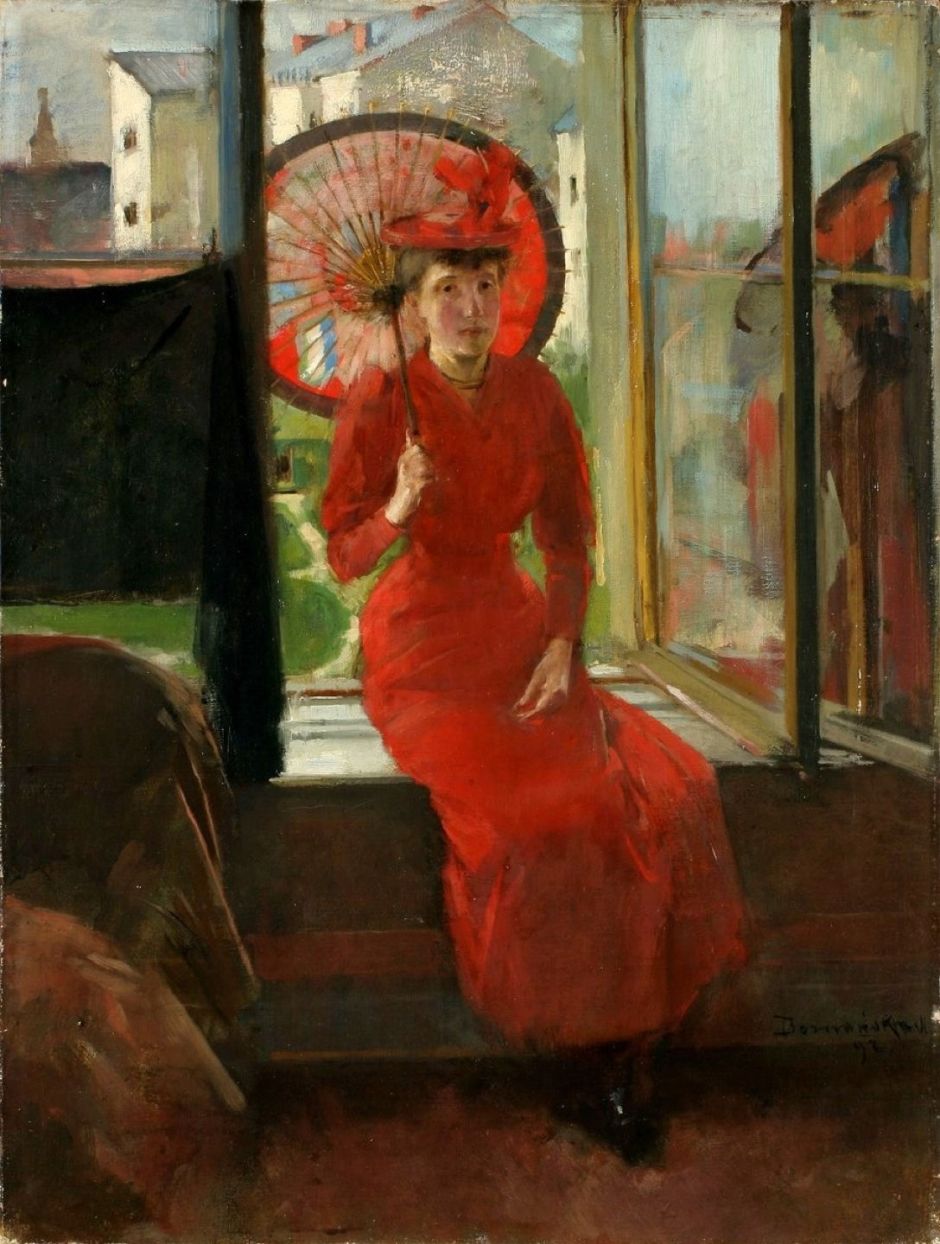
Boznańska painted self-portraits throughout her long career. This Self-portrait of her with a Japanese umbrella from 1892 is particularly striking, and must have been difficult to realise.
In 1892, a large part of the Munich Artists’ Association broke away to form the Munich Secession. Boznańska joined the Secession, and exhibited with it from 1893 onwards. In 1892, her work was exhibited for the first time in Berlin.
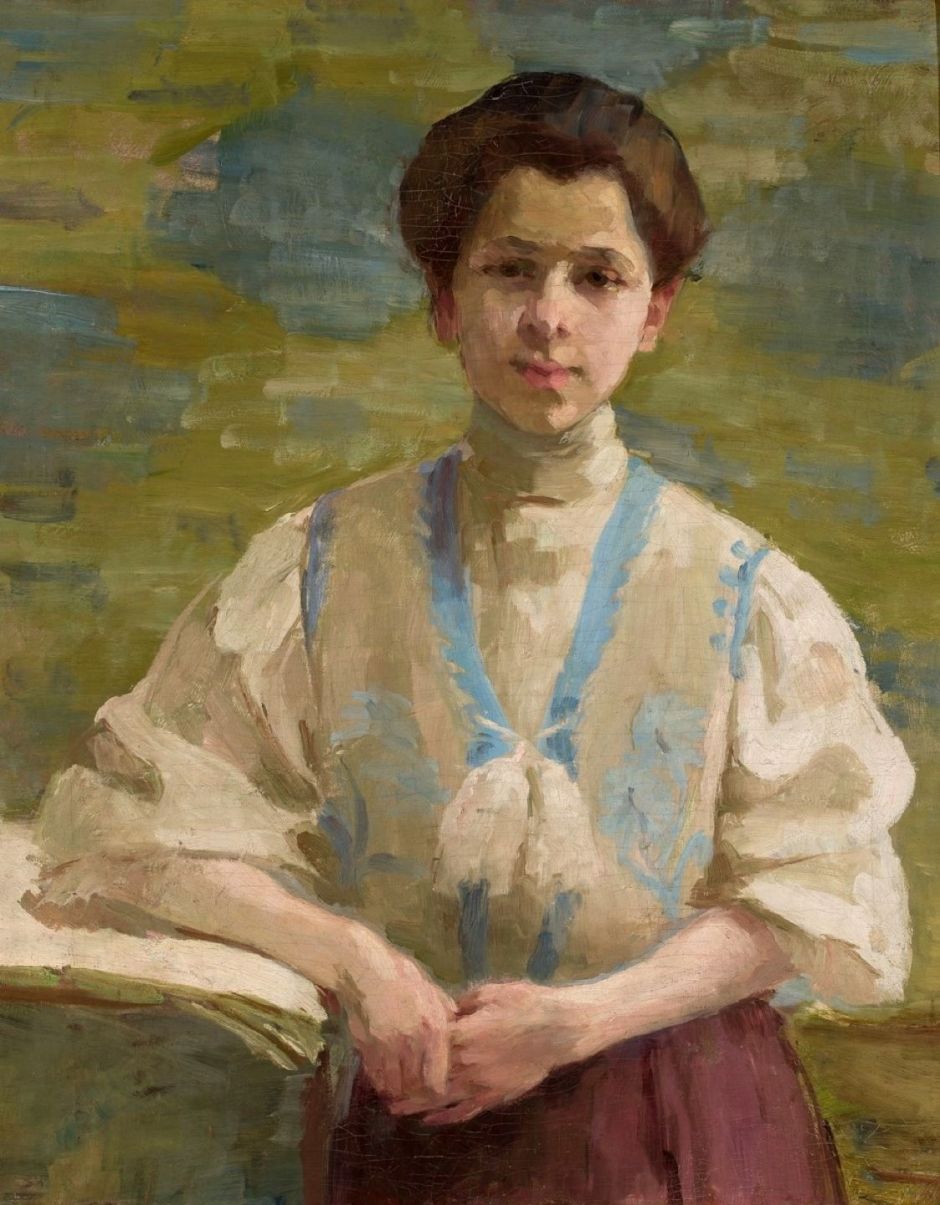
This is her best-known Self-portrait, from 1893, when she appears calm and self-confident.
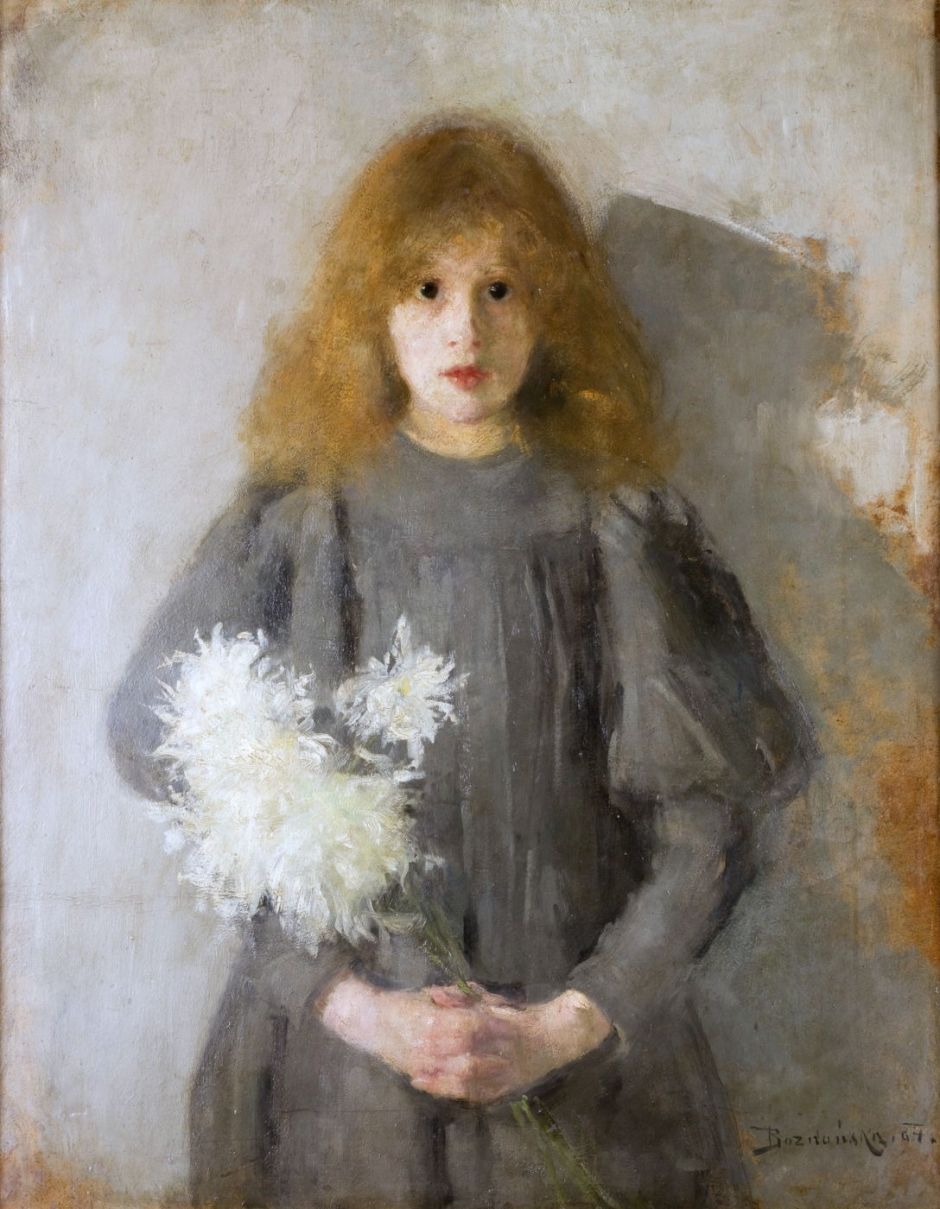
Girl with Chrysanthemums (1894) received acclaim for its expressive modernism, and for its exploration of emotion and mood in the context of character traits. It follows from the intimate portraits painted by Whistler.
In 1895, Boznańska took over the running of Teodor Hummel’s painting school in Munich, then in 1898 moved to Paris.

